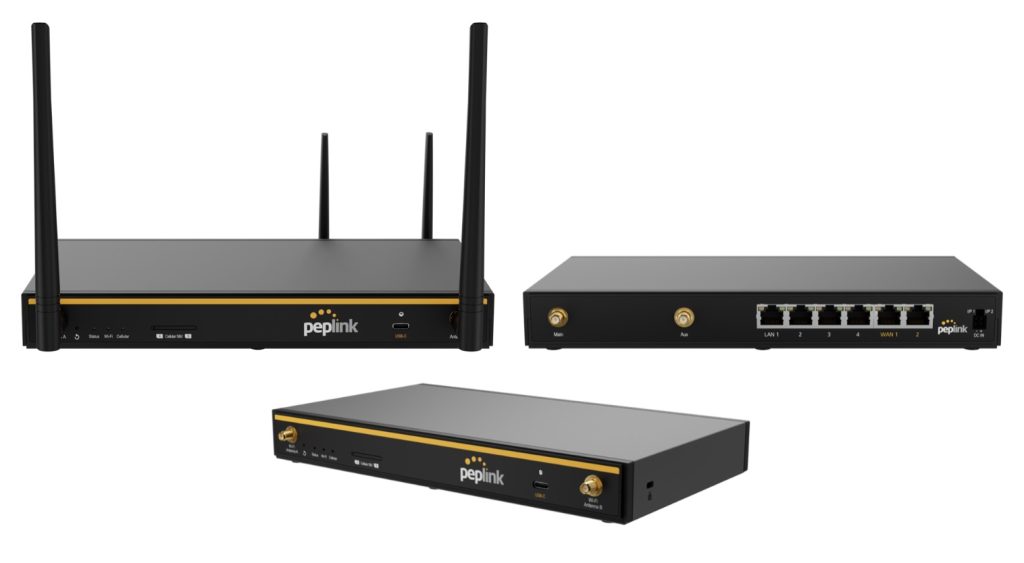In our hyper-connected world, routers are the unsung heroes that keep our devices online, ensuring smooth communication, streaming, and working from home. Given their crucial role, it’s essential to understand the various ways to power these devices. This knowledge can help optimize setup, enhance reliability, and even allow for more mobile networking solutions. Let’s dive […]
Introducing the Peplink B One Plus
We’re excited to announce the release of the Peplink B One Plus, a versatile router designed to meet the diverse connectivity needs of branch offices, retail stores, small businesses, and homes. Packed with advanced features and robust hardware, the B One Plus ensures seamless and powerful network performance, setting a new standard for reliability and […]
AT&T Suffers A Nationwide Outage
Amidst our highly connected lives, a nationwide outage from one of the major cellular providers in the USA is happening again as of today, June 4, 2024. In a statement sent to CNN, AT&T said a problem is preventing several of their customers from completing calls between carriers. Yes, that actually means that if you’re […]
Ericsson, Qualcomm, and Dronus Showcase Breakthrough 5G mmWave Drone in U.S. Smart Factory
In a remarkable technological milestone, Ericsson has partnered with Qualcomm and Dronus to demonstrate a state-of-the-art 5G millimeter wave (mmWave) powered drone at Ericsson’s USA 5G Smart Factory. This collaboration marks a significant leap in industrial automation, showcasing the first use of a natively mmWave 5G device in an industrial setting. The successful test leveraged […]
Comparing the Cradlepoint IBR600C Series and the S700 Series Routers
With the discontinuation of the Cradlepoint IBR600C series, the new Cradlepoint S700 series routers have stepped in as their replacements. Both are very similar IoT focused routers that use a Cat 4 LTE modem. So what sets them apart from each other? This article provides a detailed comparison of the specifications and features of both […]
Understanding the Technical Aspects of 5G Technology
The demand for faster, more reliable mobile communication technologies continues to grow. 5G promises to revolutionize how we connect and interact with the digital world, but do we really understand it? This technology is designed to enhance mobile broadband services, support ultra-reliable low-latency communications, and enable massive machine-type communications. These capabilities are achieved through a […]
Captive Portals: Enhancing WiFi for Transit and Retail Environments
With everyone in our country having some sort of connected device in hand at all times, offering free WiFi has become a standard amenity in various public and private spaces. From transit systems to cafes and restaurants, providing internet access can significantly enhance the user experience. However, this service comes with its own set of […]
The Evolution of Cellular Networks: From 1G to 5G and Beyond
The history of cellular networks is a fascinating journey of technological innovation and societal transformation. From the rudimentary first-generation systems to the sophisticated 5G networks, each generation has significantly impacted how we communicate, work, and live. Today, discussions about 5G Advanced and 6G services promise even greater advancements. 1G: The Birth of Cellular Communication The […]
T-Mobile Acquires UScellular Wireless Operations: What This Means for Customers and the Industry
Bellevue, Wash. – May 28, 2024 – In a major move set to reshape the wireless landscape, T-Mobile (NASDAQ: TMUS) and UScellular (NYSE: USM) announced today that T-Mobile has agreed to acquire substantially all of UScellular’s wireless operations. This acquisition includes UScellular’s wireless customers, stores, and specific spectrum assets. The transaction is expected to close […]
Is Cloud4UIS the Right Option for Controlling Your 5Gstore Remote Power Switch?
The 5Gstore Remote Power Switch offers multiple ways to control and monitor your devices remotely, making it a versatile solution for managing power to your modem and router. With the option of the cloud manager, Cloud4UIS, it makes remote management quick and easy. However, like everything, it has disadvantages for some users. This guide will […]



